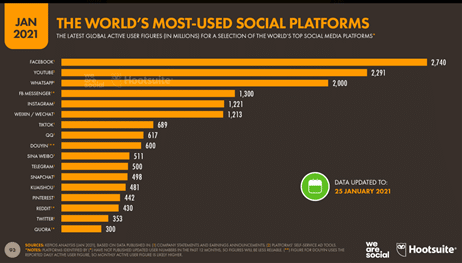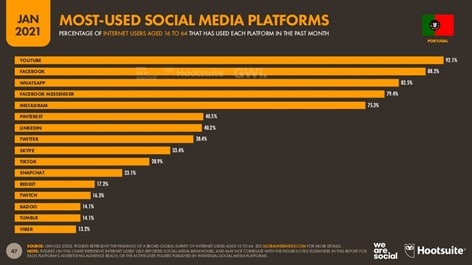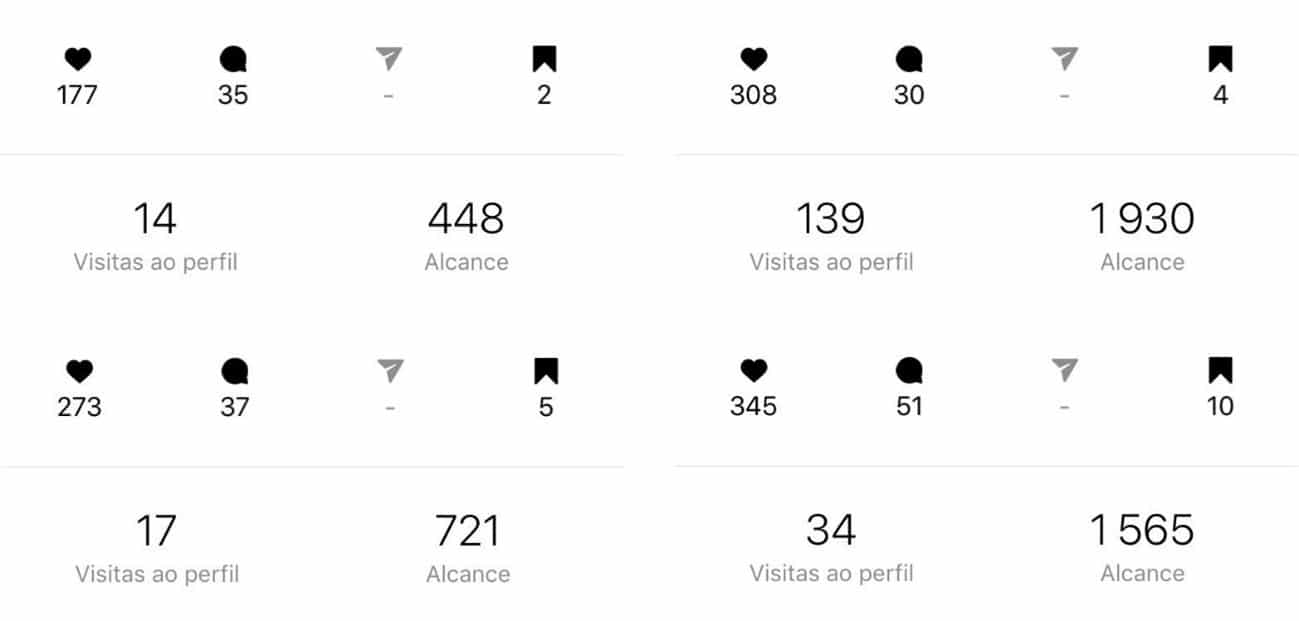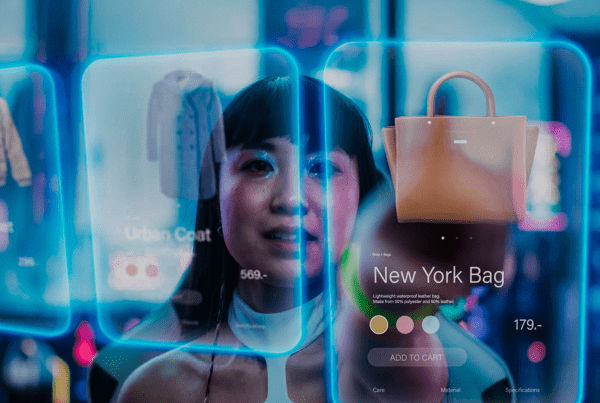
Miguel Afonso Gonçalves
– Copywriter e Travel Blogger –
In 2021 brands that choose not to have a presence on social networks are increasingly rare. And given the numbers, Instagram presents itself as a logical and obvious choice. But many of those who expand to the platform do not know how to make the most of that presence. The answer is to bring together brands, influencers, and users. How? Engagement, engagement, engagement! Let’s see, therefore, how a micro-influencer uses the platform for this purpose.
In 2021 brands that choose not to have a presence on social networks are increasingly rare. And given the numbers, Instagram presents itself as a logical and obvious choice. But many of those who expand to the platform do not know how to make the most of that presence. The answer is to bring together brands, influencers, and users. How? Engagement, engagement, engagement! Let’s see, therefore, how a micro-influencer uses the platform for this purpose.
Starting with the absolute numbers, you quickly realize that Instagram is not the platform that brings together the largest number of users.
The second decade of the 21st century consolidated the idea of the social media boom. Brands have expanded into communication platforms with high reach rates and any user has come to enjoy the “right” to influence people and communities. In fact, these new influencers – usually nicknamed influencers, digital influencers, instagrammers among many other designations – have become, they themselves, in ways capable of communicating, influencing, promoting and selling. It was, above all, on Instagram that they found the ideal space to position themselves and grow, a trend that still continues today.
Given the wide range of platforms that have, however, emerged, why do I still see Instagram as the best and most effective social network to influence followers? Starting with the absolute numbers, you quickly realize that Instagram is not the platform that brings together the largest number of users. On the contrary, it appears only in fifth position with about 1 221 million users and behind Facebook (2 740 M), YouTube (2 291 M), WhatsApp (2 000 M) and Facebook Messenger (1 300 M).

Looking in detail at the use of social networks in Portugal, the global level trend observed is confirmed. Instagram maintains the fifth position, being surpassed precisely by the same four previously identified platforms – YouTube, Facebook, WhatsApp and Facebook Messenger – but at a long distance from the platforms that follow in the ranking.

However, absolute numbers can be misleading, since, in order to assess success or potential success in each social network, you have to pay attention to several metrics and integrate them into a comparative study with other social networks. The total number of users, or even followers in particular cases, means little if brands and influencers are unable to establish an interactive and close relationship with them.
Engagement: Instagram’s strong point
Over the past few years, several studies have pointed to Instagram as the social network capable of generating more interactions between users and brands/influencers.
On the one hand, the platform – acquired by Facebook – has been renewed in order to “annihilate” possible threats from other platforms. Instagram’s multiple new features – stories, IGTV, Reels – have kept the social network relevant and able to confront (though not always in the most effective way) Snapchat, YouTube and Tik Tok, respectively.
Demonstrating as a social network competent in retaining users, what use should brands and influencers make of the various tools available, to manage communities and create relevant interaction?
Let us follow my particular example of a micro-influencer, bringing together a community of more than a thousand members. What strategy do you want on Instagram to generate high engagement rates? There are, immediately, two questions that must be answered before any analysis. How do you calculate an engagement fee? And furthermore, what is a good engagement rate?
The engagement rate can be calculated for different purposes, that is, the rate is calculated both for a specific publication and for a particular day. From the point of view of a brand that wants to invest in a publication of an influencer, the engagement rate per publication will be of the most interest to them. And that’s the most common. However, even if there is this consensus, the calculation may have different interpretations, depending on the formula used.

What metric should you then compare the number of interactions with? With the impressions? With the range? Or with the number of followers? There is no consensus here, as all solutions bring advantages and disadvantages.
Still, the fairest formula, analyzing publications independently, seems to be the contrast between the interactions and the reach of each publication.
It is known that not all followers will see the post, just as it is known that non-follower users will find the post, using certain tools such as hashtags and locations. It is therefore interesting to understand what percentage of users who have seen the content, liked, commented on, or saved the post.
Subsequently, the engagement rate of each publication can be evaluated and valued. Micro-influencers will tend to have higher engagement rates than macro and mega influencers, as they have a better knowledge of their audience, allowing them a more recurrent, close and personalized interaction. The images below are illustrative of this issue.


Calculating the engagement rates of the publications of these actual examples, it is quickly concluded that they are much higher than the average of the level in which they are included (5.7%). Having said that, there is the question: what strategy have I used to make these values happen?
The plan begins by understanding the metrics…
On the one hand, Instagram helps businesses, brands and influencers, providing important data for the management and planning of activity on the social network, such as targeting followers by gender and age group, the geographical location of followers, or even the times when more followers are active. This will give you the best time to publish and may target your audience more effectively.
And adjust it by following the rules of the algorithm
Interaction is one of the main keys to a successful social networking strategy.
On the other hand, the platform tends to decide which content has a higher or lesser value for each user, presenting it in order of relevance. And what criteria does Instagram use to define that relevance? That criteria is not static, because the platform changes it on a recurring basis. However, interaction is a factor that has never left that lot.
Any user who pays attention to detail has already realized that the “novelty” factor is no longer so decisive. It is increasingly frequent to be confronted, first of all, with content older than the following, focusing on users’ content – whether friends, brands or influencers – with which each one has a greater interaction.
It is increasingly evident that interaction is one of the main keys to a successful social networking strategy – in this case, Instagram. For each user who is faced with the publication of a business, brand or influencer, it is a potential consumer to which a good or service is promoted or sold. We are therefore left with one last unanswered question. How is interaction boosted?
Secrets to creating engagement
This shouldn’t be a problem. After all, if there is a platform that provides multiple tools to create interactions it is Instagram, either by posts, stories, direct messages, likes, comments, shares, with possibility of saving posts from other users or by the reactions.
The art in managing the relationship with the community of followers lies in the way each publication triggers interactions. Don’t worry. There are tricks to achieve it!
Posts for likes, comments, sharing and saving
Each post that appears in the feed can trigger at least one of the reactions described above. The first rule – unbreakable – is “the publication has quality and is relevant to followers”. Do not present photographs, videos or illustrations that do not have a “maximum quality seal” nor should you wander from the spectrum of themes of your expertise.
Invest more in the copy of the descriptions of the publications. Bring relevant topics, curiosities and ask the opinion of your followers. By asking questions, you’ll be integrating them and giving them room to have a voice. After all, who doesn’t like to be heard and to give an opinion?
Create content that you know, firstly, that your followers will want or need to see again.
Whether it’s the new tariff of your service or a set of cooking tips, this type of content encourages you to save the post to review later – saving time searching for it – when you’re thinking of subscribing to the service or cooking.
Bet on challenges – such as “identify your friend more…” and perhaps in a possible giveaway. Posts of this kind encourage followers to like posts, comment and share them with their network of contacts. In addition to generating numerous interactions, you will probably still have been able to expand your own community!
Instastories for direct messages and reactions
In parallel to posts, instastories are based on an autonomous and differentiated algorithm, that is, their visibility and their positioning in the “ranking” are not necessarily affected by the algorithm responsible for the posts. This is therefore an opportunity to explore another path to communicate with your network of followers.
If you choose not to publish videos in publishing format, instastories are the place to do so. They trigger instant reactions and are the best way for users to contact the brand/influencer through direct messages, responding to any stimuli caused by the content (something we saw already in a past article, published on Jelly’s blog).
Instastories house a wide range of interactive dynamics that brands and influencers can (and should) use for their own benefit. Whether it’s quizzes, polls or games, these dynamics can help you get to know and better understand the network of followers and combat the algorithm, making the brand/influencer more relevant.







